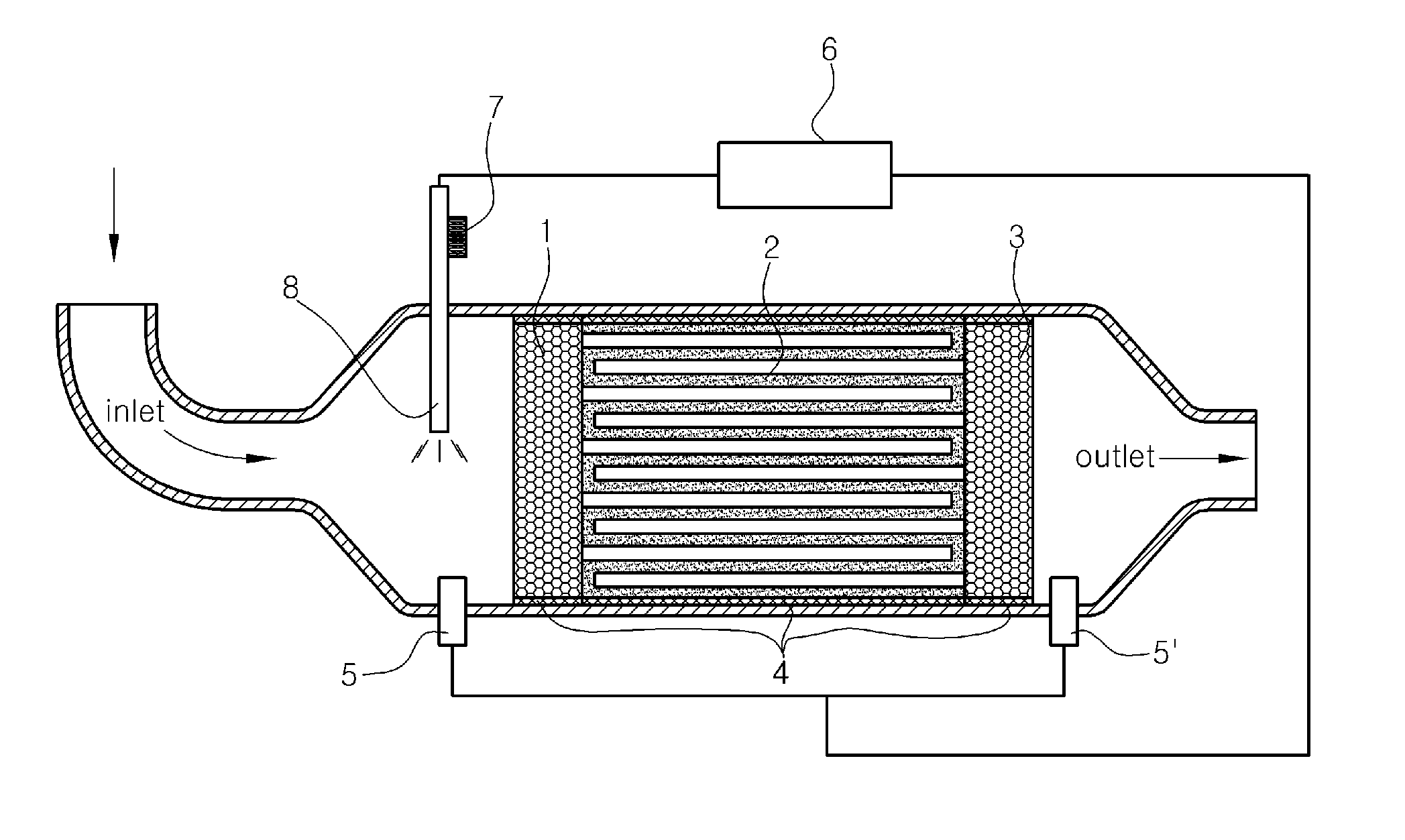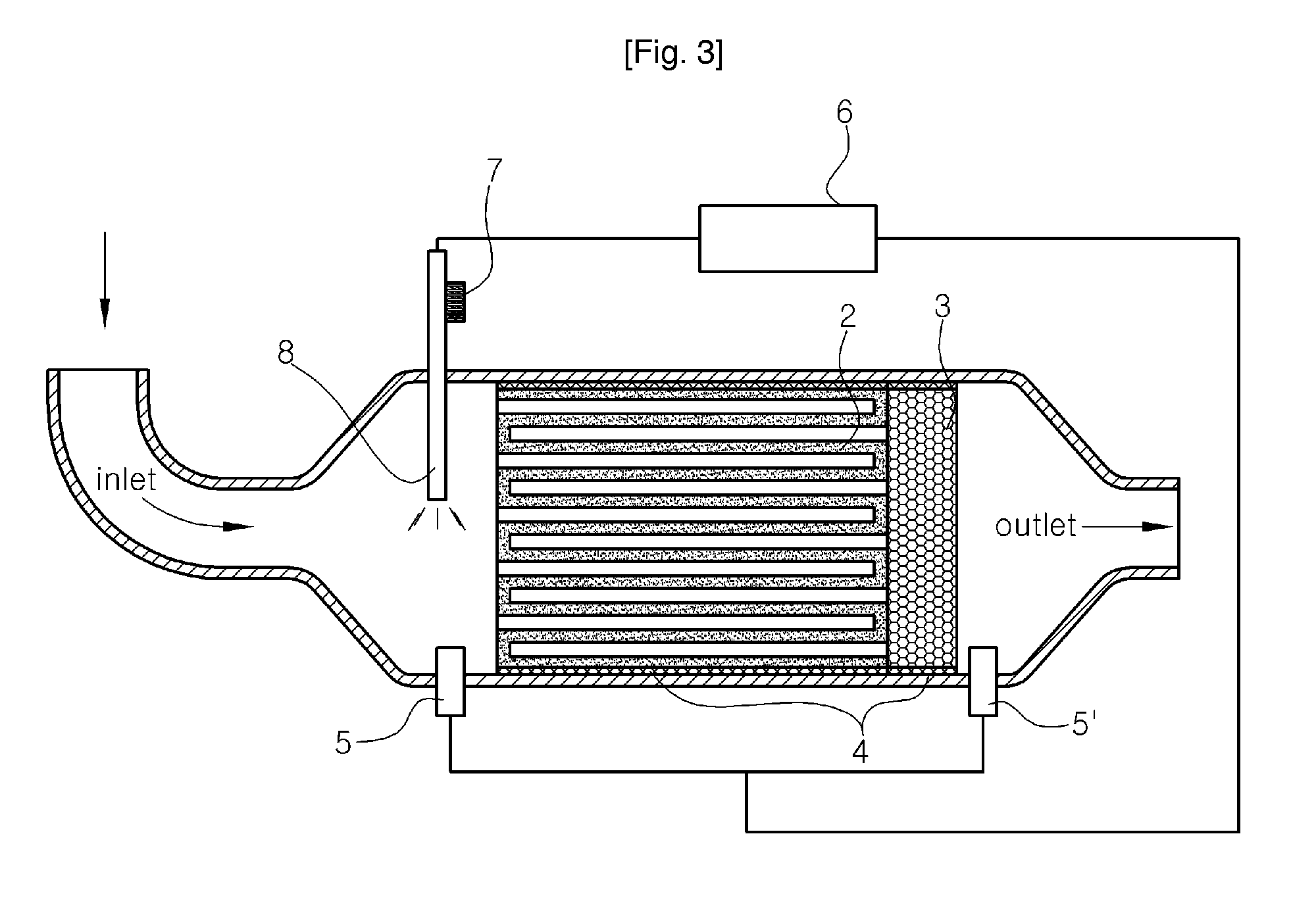Catalyst And System For Reducing Exhaust Of Diesel Engines
- Summary
- Abstract
- Description
- Claims
- Application Information
AI Technical Summary
Benefits of technology
Problems solved by technology
Method used
Image
Examples
Example
EXAMPLE 1
DPF
[0060]500 g of gamma-alumina and 500 g of BaTiO2 were wet pulverized with a ball mill for 20 hours to prepare an aqueous slurry. Then, a ceramic filter, which was 11.25 inches in inner diameter and 14 inches in length and had about 200 pore cells per square inch, was immersed in the slurry and drawn out from the slurry, and an excess of slurry in the cells was blown off with compressed air. The resulting ceramic filter was dried at 120° C. for 12 hours. The dried ceramic filter was impregnated by immersion in an aqueous chloroplatinic acid solution containing 20 g of Pt as the platinum-group metal component (A) and 5 g of Rb as the fifth-period metal component (B), and then dried at 120° C. for 12 hours. The dried ceramic filter was calcined at 400° C. for 2 hours, thus manufacturing a catalyzed ceramic filter for DPF.
Example
EXAMPLE 2
DPF
[0061]The process of Example 1 was repeated except that the component (A) was 15 g of Pt and the component (B) was 5 g of Sr.
Example
EXAMPLE 3
DPF
[0062]The process of Example 1 was repeated except that the component (A) was 15 g of Pd and the component (B) was 5 g of Y.
PUM
| Property | Measurement | Unit |
|---|---|---|
| Fraction | aaaaa | aaaaa |
| Fraction | aaaaa | aaaaa |
| Percent by mass | aaaaa | aaaaa |
Abstract
Description
Claims
Application Information
 Login to View More
Login to View More - R&D
- Intellectual Property
- Life Sciences
- Materials
- Tech Scout
- Unparalleled Data Quality
- Higher Quality Content
- 60% Fewer Hallucinations
Browse by: Latest US Patents, China's latest patents, Technical Efficacy Thesaurus, Application Domain, Technology Topic, Popular Technical Reports.
© 2025 PatSnap. All rights reserved.Legal|Privacy policy|Modern Slavery Act Transparency Statement|Sitemap|About US| Contact US: help@patsnap.com



